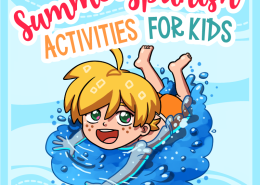 Kids' Club Spanish School, LLC
https://kidsclubspanishschool.com/wp-content/uploads/2024/07/blog_summer-spanish-activities-for-kids-3.png
807
800
Alexis Fishbaugh
https://cdnwp.kidsclubspanishschool.com/wp-content/uploads/2025/05/kids-club-spanish-school-header-logo.webp
Alexis Fishbaugh2024-07-28 22:48:532024-07-28 22:48:53Summer Spanish Activities for Kids
Kids' Club Spanish School, LLC
https://kidsclubspanishschool.com/wp-content/uploads/2024/07/blog_summer-spanish-activities-for-kids-3.png
807
800
Alexis Fishbaugh
https://cdnwp.kidsclubspanishschool.com/wp-content/uploads/2025/05/kids-club-spanish-school-header-logo.webp
Alexis Fishbaugh2024-07-28 22:48:532024-07-28 22:48:53Summer Spanish Activities for KidsEDUTAINMENT
Being educated, while also being entertained, is the best way to learn!
What is Edutainment? When thinking of the words entertainment and education, people most likely think of two very different things.
Entertainment is fun, exciting, relaxing, and a way to escape the stressors of life. Education, on the other hand, is serious, formal and meant to train us for employment and for the challenges that life brings. Entertainment and education have always had a complicated, uneasy relationship with each other because spending time with one usually means that you are neglecting the other. The truth is though, that being educated, while also being entertained, is the best way to learn!
There are numerous scientific studies that have come to the conclusion that education and entertainment, in fact, MUST come together to support an optimal learning experience. This is without a doubt, even more true when it comes to the education of children. Edutainment, is the coming together of these two worlds and provides an entertaining experience while also educating, and is at the core of Kids’ Club Spanish Schools’ teaching philosophy and helps make up our N2N method.
“The people who are crazy enough to think they can change the world are the ones who do“
– Steve Jobs
The term Edutainment was first coined by Walt Disney in 1954 to describe an academy award winning, educational nature documentary series that his studio produced. In fact, Epcot Center’s dedication plaque reads: “May Epcot Center entertain, inform and inspire.” Walt Disney knew, so many decades ago, the power that modern technology could have to educate, inspire and change the world for the better. Edutainment today is alive and is as strong as ever, as it continues to disrupt the more traditional brick and mortar, chalk and blackboard school environments.Kids’ Club Spanish School, and interactive on-line Spanish learning sites, uses edutainment to make learning pleasurable, helping kids to retain more of what they are learning. This method encourages social collaboration among students with their instructors by integrating academics with modern technology that kids are already comfortable and familiar with.
Technology
Kids, in today’s modern world, are considered to be Digital Natives. “Digital Native” is a post-millennial term that applies to children who have grown up after the widespread adoption of digital technology. These children are “native speakers” of the digital language of computers, social media, videos, video games and other kinds of media. They spend much of their play time using technology so they relate having a good time to opening up a laptop or grabbing a tablet.Kids’ Club Spanish School’s method brings the benefits of play, through the combination of the use of audio and video, live with a native Spanish speaking teacher. The kids do not associate our virtual classrooms with boring extra-curricular activities, but with a fun technological experience and a chance to play with a Spanish speaking teacher located in another country via a technological device.
Game Based Interactive Educational Activities
Children entertain themselves during playtime in many ways. Reading fun books, playing games with friends or role playing barbies or stuffed animals with their friends. We, at Kids’ Club Spanish School have taken children’s playtime and mixed it up with our educational material.
Our colorful image-filled slides, filled with comic strips, interactive activities and games such as bingo, tic tack toe, and role plays, endure that the children are learning Spanish without even realizing it. The learning is fun and comes to life for the children.
Children entertain themselves during playtime in many ways. Reading fun books, playing games with friends or role playing barbies or stuffed animals with their friends. We, at Kids’ Club Spanish School have taken children’s playtime and mixed it up with our educational material.
A Visual Experience
By introducing meaningful, visual elements to curriculum, educators can help students more completely engage. Visuals light up our learning centers in the brain and increase retention by up to 50% compared to only verbal learning.
Kids’ Club Spanish School brings learning to life in a visual way through the use of our teachers’ playful teaching method that utilizes total physical response (TPR), to help engage the kids on a visual level. Teachers don’t just sit in a chair and read from lesson plans, rather they utilize their entire bodies to engage the kids and help them associate words with playful gestures. All of our teachers are all trained in the use of TPR to teach their classes.
TPR was created by American psychologist Dr. James Asher and is based on the idea that humans create neural links between speech and action. TPR is a very important element of edutainment because it is one of the ways that all of us learned our native language as infants from people like our parents. As children we all learned our first language by interiorizing the language. Our comprehension of words and sentences was accelerated because our parents used TPR, whether they knew it or not. We were not spending time trying to memorize words and phrases, like one may do in a Spanish 101 class, however we were in a total immersion experience that engaged our brains in many different ways and on many different levels.
Classes Tailored to each Student
Another great way that Kids’ Club Spanish School entertains is by tailoring the classes to each student’s likes and hobbies. Parents are asked, when they register their child for class with us, to leave us some information about the student such as what kinds of things their children like. For example, if a parent says that their child loves Harry Potter, one of our teachers could use this information when teaching greetings in Spanish and ask the child to role play with a Harry Potter puppet asking and answering “What is your name” or “¿Cómo te llamas?”.
Through the use of playful hand gestures, facial expressions, use of props like puppets, toys and stuffed animals the teachers at Kids’ Club Spanish School teach in a way that helps kids associate new words with these playful ways of teaching. The children have fun! This helps them to stay tuned in longer and learning doesn’t feel like a chore, but instead something they look forward to, like seeing one of their friends!
Through the use of playful hand gestures, facial expressions, use of props like puppets, toys and stuffed animals the teachers at Kids’ Club Spanish School teach in a way that helps kids associate new words with these playful ways of teaching. The children have fun!
Positive Reinforcement
Positive reinforcement is something positive that occurs for the student after a certain behaviour, with the hope that the behaviour will reoccur. We want our students to know what they are doing correctly, be rewarded for it so that they continue to strive to do a good job.
Teachers at Kids’ Club Spanish School use positive reinforcement to help motivate the students. We all know how good it feels to be noticed for our good work and to be appreciated. This is even more true for kids. We want kids to feel that their accomplishments, big and small, are celebrated, because this will lead to more positive behavior and more sucDynamic, Energetic, (and even a bit silly) Teachersature which, we hope to have up and running very soon. Another way our teachers encourage the student to continue to participate and try hard in class is being their cheerleaders. When a student does a great job our teachers cheer them on with high fives, musical instruments, smiles and loud “¡Muy bien!”
Dynamic, Energetic, (and even a bit silly) Teachers
Having all of this would mean nothing, however, if it weren’t for the incredible teachers that work for Kids’ Club Spanish School. We hire teachers that want to teach because they want to be a dynamic and energetic presence in children’s lives. They are not hired solely based on their education and experience (although those are very important factors) but most importantly because of their personality, and dynamic character. Our teachers need to be willing to be silly, fun and let their hair down in class.
If parents are going to trust putting their child in front of a computer screen with another person looking in on the other side, then we feel that it is our privilege, and duty, to put the very best people in that position. We want to make sure that during the entire 25 minutes of class the student is engaged, comfortable, and having fun. The teachers support a personalized learning environment that uses edutainment and technology to enhance a creative curriculum, transforming conventional classrooms into smart classrooms.
“I believe passionately in edutainment – whether in front of a business audience, a classroom of students or a crowd of parishioners at church.“
– Paco Underhill
Entertainment combined with education shouldn’t water down the other when mixed. They should be able to compliment each other and live as a happy couple. Their relationship is as strong as ever at Kids’ Club Spanish School where learning Spanish and fun thrive and create a positive learning experience for kids. With remote learning becoming more and more prevalent and necessary in our lives today, it is so important to put kids in front of online learning opportunities that will help them to continue growing in their education and social development and help prepare them for the future.
Online education should always be a step forward in a child’s development, not a step to the side or backwards. Kids’ Club Spanish School fosters a learning environment that effortlessly captures the interest of the student and helps them to take many, many steps forward as they learn Spanish and someday walk throughout the world using their new language to benefit their lives. We are proud and honored to be using technology in a fun way that supports children in their Spanish learning adventures.
Kids’ Club Spanish School also provides children with many chances to practice Spanish, with native Spanish speaking teachers from all over the world! Sign your child up for a free trial class to help them begin their polyglot journey.
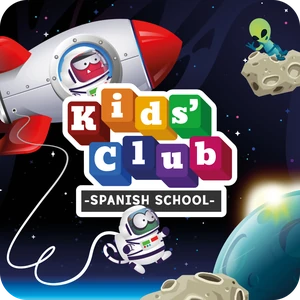
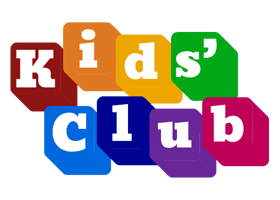
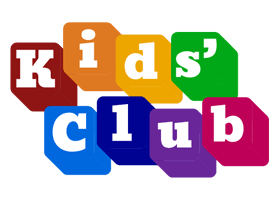

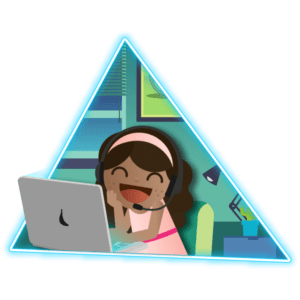
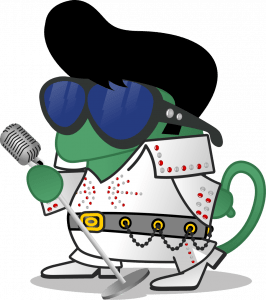
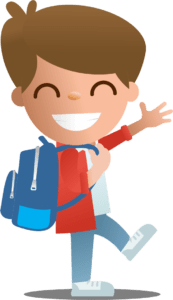
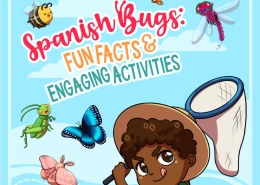 Kids' Club Spanish School, LLC
Kids' Club Spanish School, LLC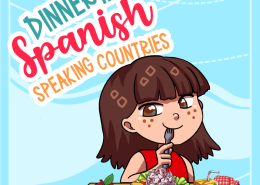 Kids' Club Spanish School, SL
Kids' Club Spanish School, SL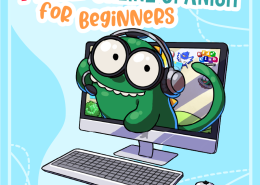 Kids' Club Spanish School, LLC
Kids' Club Spanish School, LLC

